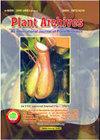NUTRIENT DYNAMICS AND SUSTAINABILITY OF WILD TASAR SILKWORM ON SAL FLORA
Q4 Agricultural and Biological Sciences
引用次数: 0
Abstract
Nutrient content in tasar host plant foliage is one of the important factors for sustainability of tasar silkworm, Antheraea mylitta D. Various sericigenous flora is abundantly found in the forests of tropical belt in India for its survivability. An investigation on nutrient dynamics of primary tasar host plants was carried out to understand the sustainability of wild tasar ecoraces on these host plants. Leaf analysis of primary tasar host plants viz. Terminalia arjuna (Arjun), Terminalia tomentosa (Asan) and Shorea robusta (Sal) by following digestion method and using Atomic Absorption Spectrophotometer reveals the fact that there are remarkable differences in intra and inter nutrient contents in the foliage of host plants of Sal and Arjun-Asan. Average nutrient contents viz. N, Fe, Zn and Mn were found more in Sal with significant value of difference in case of Mn ((t-test significance at less than 0.01%) than compared to Asan and Arjun whereas contents viz. K, P, Mg & Cu were found less or with no significant difference. On the basis of chemical analysis of 550 leaf samples of different status and different nutrient level in leaves of primary tasar host plants, it was inferred that survivability and sustainability of all wild eco-races of tasar silkworm depends on the suitable range of nutrient dynamics of its host plant. Concentration of nutrients in plant associated with plant itself was found influenced with plant part, age, leaf position on shoot and type of shoot. Content of Mn in leaf of Shorea robusta found greatly varied within the plant with difference in the height and position of the leaf. Toxic level of manganese content was found in leaves of lower position and lower twigs of the Sal plant whereas the level of this element in leaves of upper twigs and in top position of Sal tree was found in suitable and safe range for tasar silkworm. Tall Sal tree is known to be the origin of all wild eco-races of tasar as it fits both biotic and abiotic factors for tasar silkworm. When tall Sal trees are cut, coppice and dwarf Sal plant develop which does not fit for safe range of essential nutrient content of manganese for tasar insect. Manganese content in leaf of coppice Sal plant of tender, medium and mature was found as 1315.25±123.09, 1560 ± 167.46 and 1923.17±318.01 respectively whereas it was found as 382.25±37.92, 612.42± 51.38 and 712.08±84.00 in tender, medium and mature leaf of tall Sal tree. Mn content in leaf having different maturity level of other two primary tasar host plants, Arjun and Asan was found in the range of 41 ppm to 105 ppm only. Manganese concentration in leaf of coppice plants of Shorea robusta was found in much higher level than compared to other two primary tasar host plants, Terminalia tomentosa and Terminalia. arjuna. The same ecorace when reared in other primary host plants having lower nutrient of N, Fe, Zn & Mn and in lower altitude, survivability of the silkworm and quality and size of the tasar cocoon diminishes. Hence, it is the need of the hour that Sal jungles should be conserved for making dense Sal flora having larger height and size so that important wild tasar silkworm can be conserved in the tropical forests.野生沙蚕在盐区系上的营养动态和可持续性
寄主植物叶片中的营养成分是影响柞蚕(Antheraea mylitta D.)可持续性的重要因素之一。通过对原寄主植物营养动态的研究,了解野生寄主植物对原寄主植物生态的可持续性。采用消化法和原子吸收分光光度法对初代塔沙寄主植物Terminalia arjuna (Arjun)、Terminalia tomentosa (Asan)和Shorea robusta (Sal)的叶片进行分析,发现Sal和Arjun-Asan寄主植物叶片内营养成分和间营养成分含量存在显著差异。氮、铁、锌、锰的平均养分含量在Sal中高于Asan和Arjun (t检验显著性小于0.01%),而K、P、Mg和Cu含量则低于Asan和Arjun (t检验显著性小于0.01%)。通过对550个不同状态和不同营养水平的原始寄主植物叶片样品的化学分析,推测所有野生生态种的生存能力和可持续性取决于其寄主植物营养动态的适宜范围。与植株本身有关的养分浓度受植株部位、植株年龄、叶片位置和植株类型的影响。在不同植株内,随着叶片高度和位置的不同,粗竹桃叶片中Mn的含量变化很大。沙蚕下部叶片和下部小枝锰含量处于毒性水平,而沙蚕上部小枝和上部叶片锰含量处于适宜和安全范围。高大的萨尔树被认为是所有野生萨尔生态品种的起源,因为它符合萨尔蚕的生物和非生物因素。砍断高大的杉树后,生长出矮杉树和矮杉树,不符合沙虫必需营养元素锰含量的安全范围。嫩、中、成熟杉木叶片锰含量分别为1315.25±123.09、1560±167.46和1923.17±318.01,而高杉木嫩叶、中、成熟杉木叶片锰含量分别为382.25±37.92、612.42±51.38和712.08±84.00。另外两种主要tasar寄主植物Arjun和Asan在不同成熟度的叶片中Mn含量仅在41 ppm ~ 105 ppm之间。结果表明,赤芍(Shorea robusta)乔木叶片中锰的含量远高于其他两种主要寄主植物毛蕊草(Terminalia tomentosa)和毛蕊草(Terminalia)。阿诸那。同一生态条件下,在其他低氮、低铁、低锌、低锰的主寄主植物中饲养,蚕蛹的成活率、质量和大小均下降。因此,当务之急是保护萨尔丛林,使茂密的萨尔植物群具有更大的高度和大小,以保护热带森林中重要的野生萨尔蚕。
本文章由计算机程序翻译,如有差异,请以英文原文为准。
求助全文
约1分钟内获得全文
求助全文
来源期刊

Plant Archives
Agricultural and Biological Sciences-Plant Science
自引率
0.00%
发文量
70
期刊介绍:
Information not localized
 求助内容:
求助内容: 应助结果提醒方式:
应助结果提醒方式:


